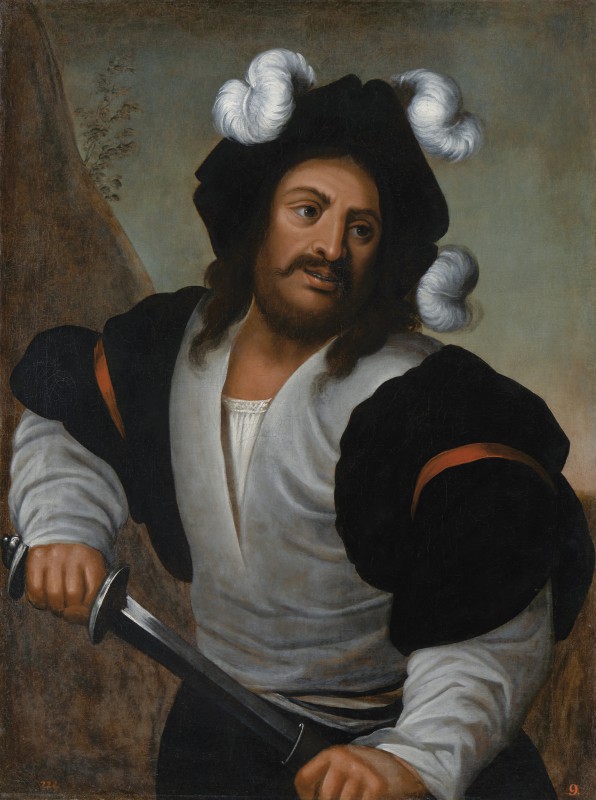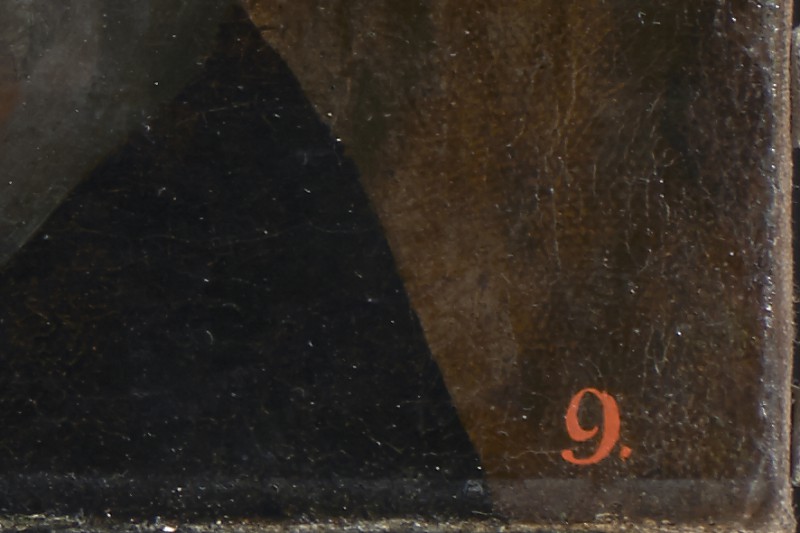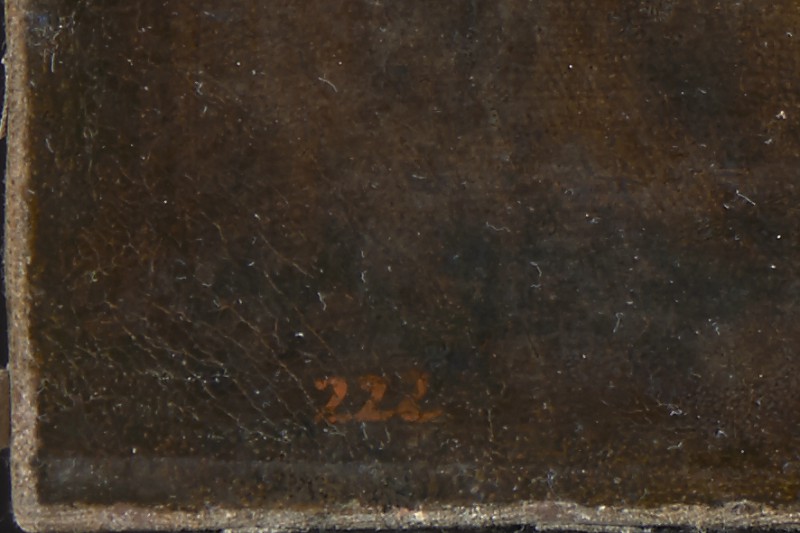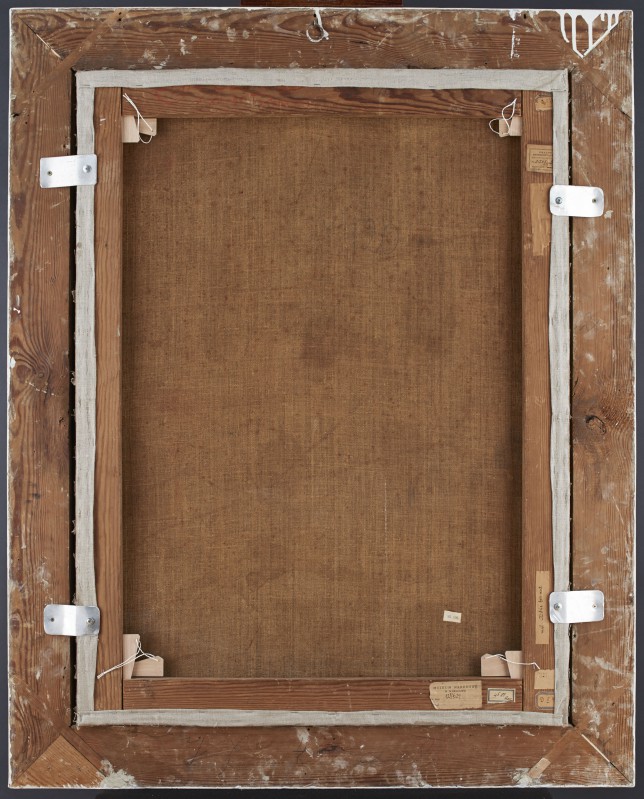Warrior Drawing a Sword (‘Pierre Terrail de Bayard’)
- Date
- 17th c.
- Object type
- painting
- Technique
- oil
- Material
- canvas
- Dimensions
- 92,0 x 67,0 cm
- Acquisition date
- 1776
- Location
- The Palace on the Isle - Vestibule, ground floor
- Marks and inscriptions
- red number 222[6] (last number illegible) of the Stanisław August collection, bottom left red number 9 of the 1839 inventory of Russian Imperial Palaces – Łazienki, bottom right
- Place of Origin
- Italy (Europe)
- Owner
- The Royal Łazienki
- Museum number
- ŁKr 954
Pierre Terrail de Bayard (1473–1524), known as the Chevalier Bayard, French national hero, commander of the French armies in the wars conducted by the major states of Western Europe on the Apennine Peninsula; he gained renown at the Battle of Garigliano of 1503 between the Spanish and the French. According to tradition, when defending a bridge over the river he stood alone to face 200 Spaniards.
The painting was hung as an overdoor in the Vestibule on the ground floor of the Palace on the Isle, where it was probably mounted in the years c. 1772–76, like the portrait of Wincenty Gosiewski, which hung opposite, the presence of which is documented in a survey drawing made by Johann Christian Kammsetzer, dated 1776 (see cat. no. 124). …
In the Stanislavian sources and 19th-century catalogues and inventories, the present painting was recorded without the name of the author or the school. Stanisław Iskierski (S. Iskierski, Katalog galerii obrazów Pałacu w Łazienkach w Warszawie, Warsaw 1931) described it as ‘after an original by the Venetian school’. In the 1967 catalogue of the National Museum in Warsaw it was published as being by a follower of Pietro della Vecchia. …
Della Vecchia’s original of this popular composition in the Kunsthistorisches Museum in Vienna (inv. no. 70 … ), showing the figure of a warrior, to just below hip height, was dated by Bernardo Aikema to c. 1640 (B. Aikema, Pietro della Vecchia and the heritage of the Renaissance in Venice, Florence 1990, p. 23, no. 211 on p. 149). …
During the most recent conservation work, the original colouring of the background was reinstated: green with brown glaze. The cleaning and technical examination of the painting … enabled a full and reliable assessment of it. As Janina Michałkowa (J. Michałkowa, Holenderskie i flamandzkie malarstwo rodzajowe XVII wieku, Warsaw 1955) wrote, it is a very poor quality copy. Painted schematically, flatly, it is totally devoid of any texture, which was so characteristic not only of della Vecchia’s work, but also of his studio, so it cannot be connected to it. … [D. Juszczak, H. Małachowicz, The Stanisław August Collection of Paintings at the Royal Łazienki. Catalogue, Royal Łazienki Museum, Warsaw 2016, no. 105, pp. 387–389.]







